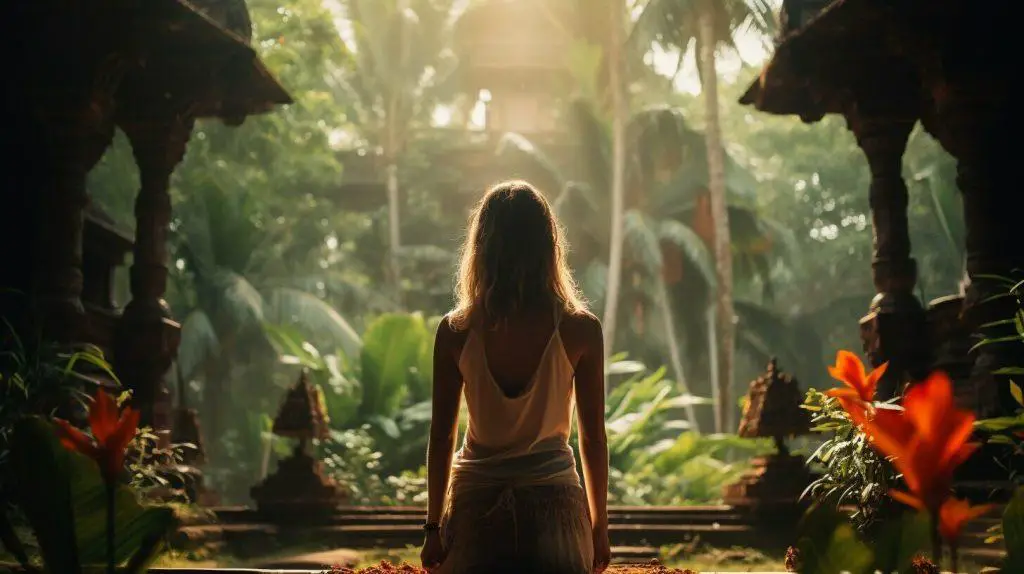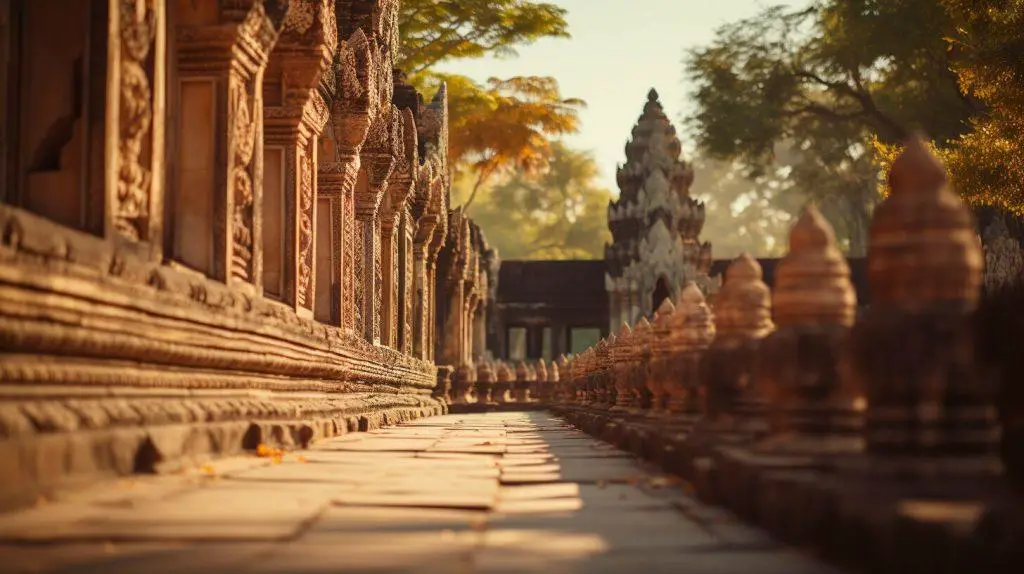For many tourists visiting Cambodia, a trip to a monastery is a must-do activity. These historical sites not only offer a glimpse into the rich cultural heritage of Cambodia but also provide an opportunity to learn about Buddhism, the dominant religion in the country. However, it’s essential to remember that these monasteries are sacred grounds where monks and nuns reside and practice their faith. As such, visitors must show respect and observe proper etiquette when visiting these sites.
How to visit Cambodian monasteries respectfully? This article will provide essential tips for visitors to ensure they have an enjoyable and respectful experience at these historical sites. From understanding the significance of Cambodian monasteries to dressing appropriately, to interacting with monks and nuns, readers will learn how to show cultural sensitivity when visiting these sacred grounds.
Key Takeaways
- Cambodian monasteries are significant religious sites in the country.
- Visitors must dress appropriately and observe respectful behavior and etiquette.
- Interacting with monks and nuns requires cultural sensitivity.
- Photography and the use of electronic devices must be done with permission and sensitivity.
Understanding Cambodian Monasteries
Located throughout Cambodia, monasteries serve as the center for Buddhist practice and worship. The country’s rich cultural heritage and long history of Buddhism have resulted in monasteries playing a significant role in Cambodian daily life and social customs.
Cambodian monasteries are known for their architectural beauty, reflecting the country’s artistic and religious traditions. The temple is divided into separate buildings and courtyards, each with its unique function. The main building houses the Buddha statue, where locals come to offer prayers and request blessings. The secondary buildings act as dormitories for monks.
History of Cambodian Buddhism
Buddhism has played a central role in Cambodia’s society since the reign of King Jayavarman VII in the 12th century. At that time, King Jayavarman VII built massive temples throughout the country, which served as centers of worship and were instrumental in spreading Buddhism throughout Cambodia.
During the rule of the Khmer Rouge in the 1970s, many monasteries and pagodas were destroyed, and countless monks were killed. It was only after the fall of the Khmer Rouge and the establishment of a democratic government that Buddhism was once again allowed to flourish in Cambodia.
Today, more than 90% of Cambodians practice Theravada Buddhism, which is considered the oldest and most conservative branch of Buddhism.
Dress Appropriately
When visiting Cambodian monasteries, dressing appropriately is of utmost importance. Visitors are expected to dress modestly and respectfully to show reverence for the religious site and monks.
Women should avoid wearing revealing clothing or anything that exposes their shoulders, knees, or midriff. Men should also refrain from wearing shorts and sleeveless shirts.
It is recommended to wear lightweight, breathable clothing that covers the knees and shoulders. Loose-fitting clothing is especially appropriate for hot weather conditions, as it promotes comfort and ease of movement.
Visitors must also remove their shoes before entering the monastery proper. This is a sign of respect and cleanliness, as shoes can bring dirt and pollutants into the sacred space.
Respectful Behavior and Etiquette
When visiting Cambodian monasteries, it is essential to be mindful of proper behavior and etiquette. This includes recognizing the sacred and spiritual nature of the space and its inhabitants.
One of the first rules to observe is to speak softly. Cambodian monasteries are places of contemplation and meditation, and loud noises or conversations can be disruptive to those practicing there.
Another important aspect of respectful behavior is removing your shoes before entering a temple or monastery. This is a traditional custom that signifies leaving behind the outside world and entering a pure and sacred space.
It is also important to dress appropriately when visiting Cambodian monasteries. Avoid wearing revealing or tight-fitting clothing, as this can be seen as disrespectful. Instead, opt for modest attire that covers the shoulders and knees.
In addition to these basic rules, there are other customs to follow when interacting with monks or participating in rituals. For example, it is considered polite to bow or kneel when approaching or leaving a monk. If offering a donation, it should be presented with both hands, and the giver should never touch the monk directly.
Finally, it is important to be aware of local customs and practices when visiting Cambodian monasteries. This may include observing specific rituals or ceremonies, such as lighting candles or incense, or refraining from certain behaviors, such as taking photos during prayer times.
Interacting with Monks and Nuns
When visiting Cambodian monasteries, it is important to interact with monks and nuns respectfully. These individuals are highly respected in Cambodian culture, and visitors should observe proper etiquette and customs when interacting with them.
First and foremost, visitors should never touch a monk or nun, as physical contact is considered inappropriate. Instead, individuals should pay their respects by bowing their heads and placing their palms together in a prayer-like gesture, known as “sampeah”.
If offering a donation to a monk or nun, it is important to do so without expectation of receiving something in return. Visitors should approach the monk or nun with their donation and place it in the offering bowl or plate provided.
When participating in rituals or ceremonies, visitors should observe and follow the lead of the monks or nuns. It is important to remain quiet and avoid making any sudden movements that could disrupt the proceedings.
Lastly, it is important to remember that not all monasteries allow female visitors to interact with male monks, and vice versa. Visitors should be aware of this and observe any restrictions or guidelines provided by the monastery.
Photography and Electronic Devices
Cambodian monasteries provide a unique opportunity for visitors to experience the country’s rich cultural and religious heritage. However, it is important to remember that these places of worship are also home to the monks and nuns who reside there, and visitors should take care to be respectful of their surroundings.
When it comes to photography and electronic devices, it is important to exercise sensitivity and seek permission before taking pictures or using devices within the monastery grounds. In some cases, photography may be prohibited altogether, so it is important to acquaint yourself with the rules in advance.
If photography is allowed, it is important to use discretion and avoid taking pictures of individuals without their consent. In particular, it is important to be mindful of the monks and nuns who reside in the monastery, as they may prefer not to be photographed. Before taking any pictures, it is always a good idea to ask for permission.
When using electronic devices, it is important to keep the volume low and avoid making loud noises that could disrupt the peaceful atmosphere of the monastery. Visitors should also be wary of playing music or using other audio features that could be considered inappropriate or offensive.
Overall, visitors to Cambodian monasteries should approach photography and electronic devices with sensitivity and respect for the cultural and religious significance of these places. By doing so, they can help ensure that these sacred spaces remain welcoming and open to all who wish to experience them.
Conclusion
Visiting Cambodian monasteries can be a valuable and educational experience, but it is important to approach it with cultural sensitivity and respect. By following the essential tips outlined in this article, visitors can ensure that they are dressing appropriately, behaving respectfully, and interacting thoughtfully with monks and nuns. Additionally, understanding the significance of Cambodian monasteries in Buddhism and the local customs and traditions will enhance the overall experience and foster a deeper appreciation for this important aspect of Cambodian culture.
FAQ
How should I dress when visiting Cambodian monasteries?
It is important to dress appropriately when visiting Cambodian monasteries. Men and women should cover their knees and shoulders. Wearing loose-fitting and modest clothing is recommended.
What is the expected behavior and etiquette when visiting Cambodian monasteries?
When visiting Cambodian monasteries, it is important to maintain respectful behavior. This includes speaking softly, removing your shoes before entering buildings, and observing local customs and traditions.
How should I interact with monks and nuns in Cambodian monasteries?
When interacting with monks and nuns in Cambodian monasteries, it is important to show respect. Avoid physical contact, ask permission before taking photographs, and be mindful of offering donations in an appropriate manner.
Can I take photographs and use electronic devices in Cambodian monasteries?
Photography and electronic devices can be used in Cambodian monasteries, but it is essential to be sensitive and respectful. Always ask for permission before taking photographs, and refrain from using electronic devices during important rituals or ceremonies.




